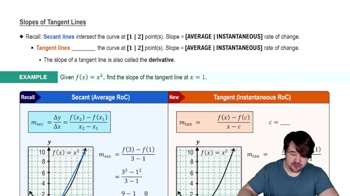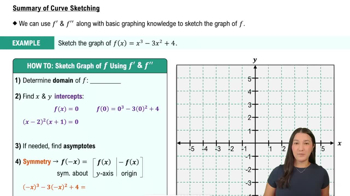58–59. Carry out the following steps.
a. Use implicit differentiation to find dy/dx.
xy^5/2+x^3/2y=12; (4, 1)
 Verified step by step guidance
Verified step by step guidance Verified video answer for a similar problem:
Verified video answer for a similar problem:


 5:14m
5:14mMaster Finding The Implicit Derivative with a bite sized video explanation from Patrick
Start learning